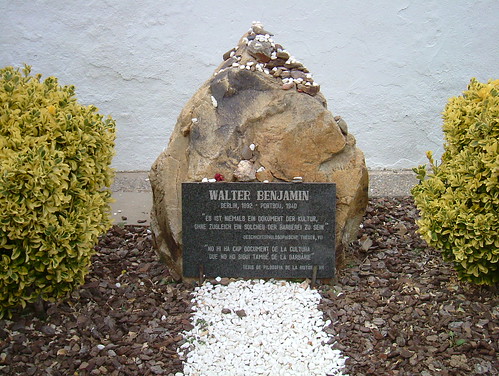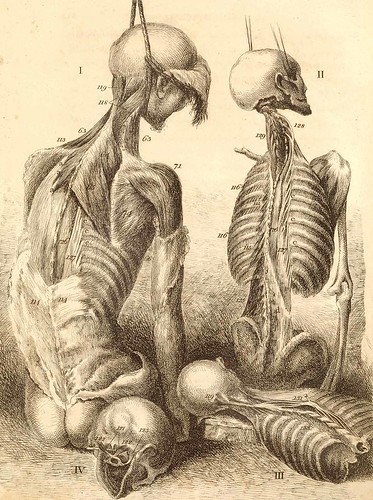“The two lovers are able to experience a feeling of unrestrained and untamed abandonment to one another. It is not necessary for them to pay attention either to what the self is doing or what the partner is doing. All the movements take care of themselves, as if reflexively. The sensations greedily absorbed by the vulva, externally and through deep interior pressure, tell the vaginal cavity how to selfishly pulsate, ripple, quiver, and contract on the penis, in order to release itself in orgasm. Reciprocally, the penis selfishly probes and presses, twists a little, withdraws and tantalizes at the portals, and sinks deeply again, it too greedily building up its own orgasmic pleasure. The two bodies writhe, unheedingly. The two minds drift into the oblivion of attending only to their own feeling, so perfectly synchronized that the ecstasy of the one is preordained to be the reciprocal ecstacy of the other. Two minds, mindlessly lost in one another. This is the perfect orgasmic experience. This is how an orgasm sighs, moans, exclaims, expires, exhausts itself into exultant repose.” —John Money, Love and Love Sickness: The Science of Sex, Gender Difference and Pair-bonding, pp. 118-119. John Hopkins University Press (Baltimore, London) 1980.
Category Archives: hauntology
Know this my son: when grief turns into life, life stops being grief

This image to introduce you in the obliquest of ways to Simon Vinkenoog, a Dutch poet (Welk Masker Zal Ik Dragen) I have taken a liking to.
Yesterday, Vinkenoog introduced me to one of his favorite poems: De Stem van Vincent; which Vinkenoog called on his non-rss blog “one of the most impressive poems in the Dutch language”. It is a poem by Flemish poet Paul van Ostaijen dedicated to Vincent van Gogh. I will translate the first sentence:
Some excerpts in Dutch:
“Niet het te zijn of niet te zijn is de levensopgaaf,
maar het misterie van het zijn vult alles,
Het eigen zijn. Dat over alles te leggen.”
“En telkens woont
‘t woord onder ons
dat ons bewoont, –
nieuw.
De weg van de Verlosser,
de weg van het leed;
een hoogvlakte van geluk.”
Introducing Morbid Anatomy
Morbid Anatomy is a new blog dedicated to anatomy, which describes itself as “Surveying the Interstices of Art and Medicine, Death and Culture.”
An example of one of the major artists of anatomica: d’Agoty

Anatomie des parties de la génértion de l’homme et de la femme
Paris, 1773. Colored mezzotint. National Library of Medicine
image sourced here.
Necrotourism
A 2004 photograph of the grave of Walter Benjamin at Portbou, Spain, photo taken by Klaus Liffers, sourced here.
Nina sings I Put a Spell on You
[Youtube=http://www.youtube.com/watch?v=ORSzfw8FE-o]
The capricious interference of the artist
Etching of the bones, muscles, and joints, illustrating the first volume of the Anatomy of the Human Body. 2d ed. London, 1804. Etching. National Library of Medicine.
Further to my post More Géricault I tried to find the source of the Géricault Severed Heads painting and I found John Bell at the classic Dream Anatomy site. I couldn’t find the pictures I was looking for, that’s why I am giving you the above (there is one more over at my Flickr stream). I did find the story behind the Severed Heads painting of Géricault:
Théodore Géricault‘s painting Severed Heads (1818) [2] painting of two severed heads on a white cloth, turns out to be, not a painting of two heads fresh from the guillotine, but a painted elaboration of an illustration to a book on anatomy (Engravings, explaining the Anatomy of the Bones, Muscles and Joints ) by British surgeon John Bell. This site on France and Scotland in the Arts gives a detailed explanation how Délacroix’s Severed Heads is a painted elaboration of the work of John Bell, not an image of guillotined heads.
Also from dreamanatomy : “John Bell criticized “the subjection of true anatomical drawing to the capricious interference of the artist, whose rule it has too often been to make all beautiful and smooth, leaving no harshness….” His own drawings and etchings are notably harsh.”
The most haunting image of the Holocaust
Having found Five explanations for the jump cuts in Godard’s Breathless made me research other work by the author Richard Raskin and I ended up with finding one of his books on the photograph shown above. The extended essay/book is called A Child at Gunpoint [Amazon] and it documents one of the iconic pictures of the twentieth century. For a long time it was unknown who the boy in the picture was. It has been recently suggested that it was Tsvi Nussbaum. For an online analysis of the identity of the people in the photograph, see here.
In the introduction to the book the publisher writes:
Widely regarded as the most haunting image we have of the Holocaust, the photo of a young boy with his hands up being driven from the Warsaw ghetto has served as a touchstone for everyone from the Nuremberg prosecutors to Elie Wiesel, and from Susan Sontag to revisionist ranters on the web.
What makes this picture so ‘haunting‘ is that it involves children. The most famous picture of the Holocaust is probably this one. Searching for Child+Holocaust at Google brings up this.
Derrida on Youtube
Padraig points us in the direction of some wonderful Youtube footage of/on Derrida. I especially enjoyed this clip about a visit Derrida paid to Prague, and was framed by the police on account of drug charges. He felt as if the spirit of Kafka had come back to haunt him. Padraig’s post is appropriately tagged hauntology, this moment’s buzzword. In French a ghost is called a revenant, someone who comes back.
A revenant in the Middle Ages was an animate corpse which rose from the grave to haunt the living. Many stories were documented by English historians in the Middle Ages, as examplified by William of Newburgh who wrote in the 1190s “one would not easily believe that corpses come out of their graves and wander around, animated by I don’t know what spirit, to terrorize or harm the living, unless there were many cases in our times, supported by ample testimony”. Stories of revenants were very personal, always about a specific individual who had recently died (unlike the anonymous zombie depicted in modern popular culture such as Night of the Living Dead), and had a number of common features.
What is hauntology?
Spending time on Padraig’s Subject-barred brought the concept of hauntology to my attention via this piece titled The Gramophone’s Technological Uncanny which furthers Mark K-Punk’s investigation of sonic hauntology. In its origins hauntology is Jacques Derrida‘s neologism which is, in French, a pun on ontology and refers to, in the words of the Halflives website: “the paradoxical state of the specter, which is neither being nor non-being.”
Besides by K-Punk (here in a piece on Kubrick), hauntology is also used by Simon Reynolds here and by Woebot here.
No doubt the term goes back 1848 when Marx and Engels stated “A spectre is haunting Europe, the spectre of Communism.” Haunting is about ghosts, and one of the first people to use the word haunting in a musical context was David Toop’s Haunted Weather : Music, Silence, and Memory (2004).
About four weeks ago, The Existence Machine also wondered just what is hauntology.
K-Punk thinks this is a good summary of the concept.
Someone wrote an Wikipedia entry on hauntology in October of 2006 but it was deleted by consensus. It finally passed Wikipedia stringent notability criteria in August 2007.
See hauntology at artandpop.




